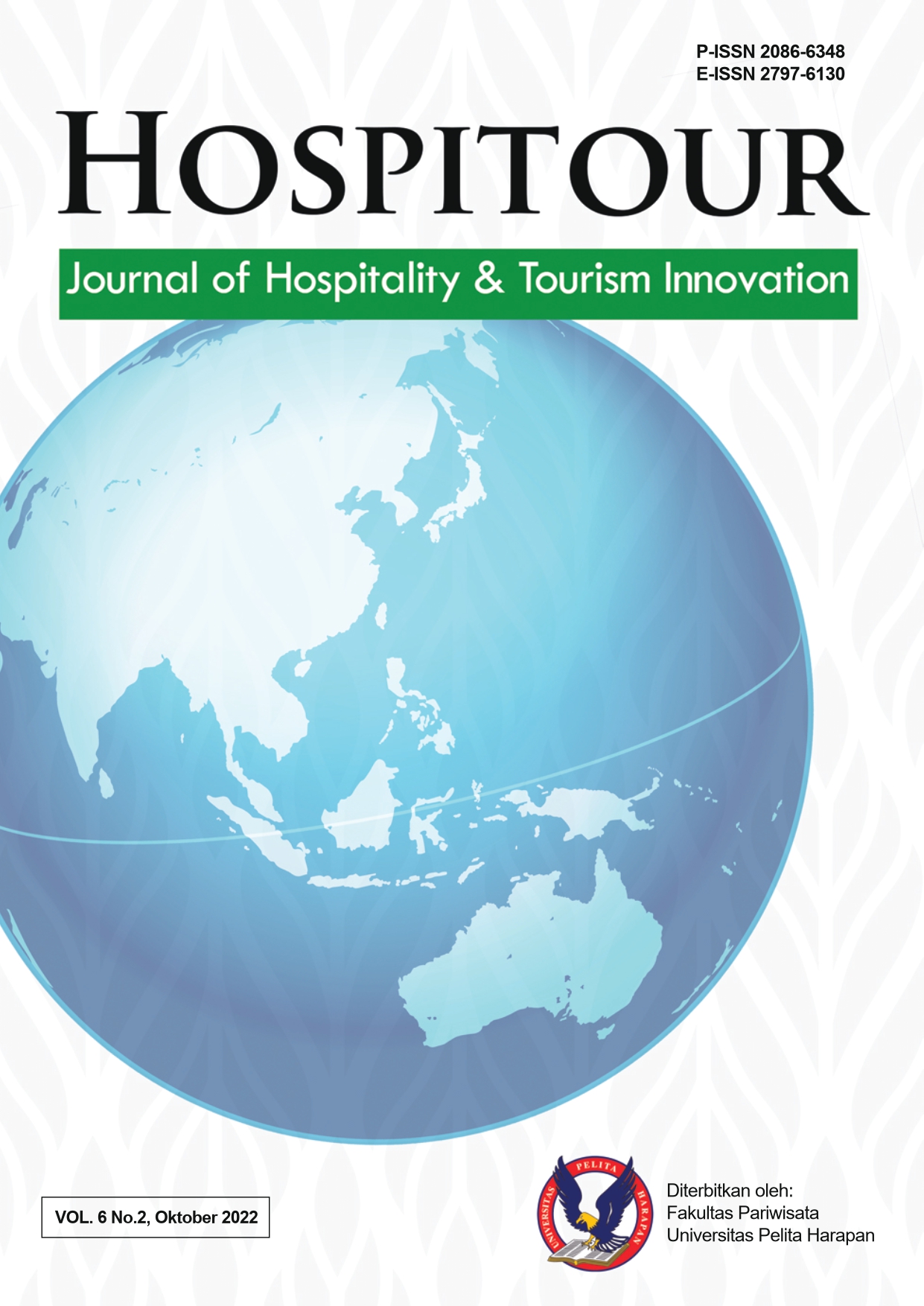GEOGRAPHICAL INDICATION BRAND AS PROMOTION OF DESTINATION (STUDY OF SAMBAL HIYUNG)
Trefwoorden:
geographical indication, startup product, name of placeSamenvatting
ABSTRACT
This study aims to determine the use of geographical indication brands as a way to promote a destination. Manufacturers have used place names (geographical indication) as brands for a long time, especially for food and beverage products. This research refers to a startup product, namely Sambal Hiyung, which was made by 4 (four) students in the Hospitour Entrepreneur Club(HEC) program batch 1 In period February to June 2021. Using a qualitative descriptive analysis approach, by conductingobservations and interviews during June 2021 to the owners of this startup . The results show that the use of place names can help introduce/promote the place to the wider community, as well as increase product sale.
Design/Methodology. This study was conducted by observations and surveys the development of Sambal Hiyung as start up product, by qualitative descriptive approached . Primary data collection instrument using questionnaire list to the owners andcustomers. The analysis technique, using Nvivo12 to explore the word frequency.
Referenties
Creswell, J. W. (2013). Qualitative Inquiry & Research Design, Choosing Among Five Approaches. In SAGE Publications, Inc (Third). SAGE Publications Inc. Fernández-FerrÃn, P., Bande, B., Galán-Ladero, M. M., MartÃn-Consuegra, D., DÃaz, E., & Castro- González, S. (2019). Geographical indication food products and ethnocentric tendencies: The importance of proximity, tradition, and ethnicity. Journal of Cleaner Production, 241. https://doi.org/10.1016/j.jclepro.2019.118210 Gheorghe, G., Tudorache, P., & Nistoreanu, P. (2014). Gastronomic Tourism, a New Trend for Contemporary Tourism?? Cactus Tourism Journal, 9(1), 12-21. Gopalakrishnan, N., Nair, P. S., & Babu, A. K. (2007). Exploring the Relationship between Geographical Indications and Traditional Knowledge An Analysis of the Legal Tools for the Protection of Geographical Indications in Asia. Science And Technology, August. http://scholar.google.com/scholar?hl=en&btnG=Search&q=intitle:Exploring+the+Relatio nship+between+Geographical+Indications+and+Traditional+Knowledge+An+Analysis+o f+the+Legal+Tools+for+the+Protection+of+Geographical+Indications+in+Asia#0 Lee, K. H., Packer, J., & Scott, N. (2015). Travel lifestyle preferences and destination activity choices of Slow Food members and non-members. Tourism Management, 46, 1-10. https://doi.org/10.1016/j.tourman.2014.05.008 Marie-Vivien, D., & Biénabe, E. (2017). The Multifaceted Role of the State in the Protection of Geographical Indications: A Worldwide Review. World Development, 98, 1-11. https://doi.org/10.1016/j.worlddev.2017.04.035 Neilson, J., Wright, J., & Aklimawati, L. (2018). Geographical indications and value capture in the Indonesia coffee sector. Journal of Rural Studies, 59(January), 35-48. https://doi.org/10.1016/j.jrurstud.2018.01.003 Paramitha, D. A. A. (2021). Jumlah Pulau di Indonesia, Traveler Harus Tahu. Okezone.Com. https://www.okezone.com/tren/read/2021/01/13/620/2343504/jumlah-pulau-di- indonesia-traveler- harus-tahu Seal, P. P., & Piramanayagam, S. (2018). Branding Geographical (GI) of Good and Implications on Gastronomic Tourism: an Indian Perspective. Singh, A. K., Brahmi, P., & Saxena, S. (2007). The geographical indications of goods (Registration and Protection) Act (1999) of India: Implication for agricultural goods. Asian Agri-History, 11(4), 253-263. Yin, R. K. (2011). Qualitative Research from Start to Finish. The Guilford Publications, Inc.
##submission.downloads##
Gepubliceerd
Nummer
Sectie
Licentie
Authors who publish with this journal agree to the following terms:
1) Authors retain copyright and grant the journal right of first publication with the work simultaneously licensed under a Creative Commons Attribution License (CC-BY-SA 4.0) that allows others to share the work with an acknowledgement of the work's authorship and initial publication in this journal.
2) Authors are able to enter into separate, additional contractual arrangements for the non-exclusive distribution of the journal's published version of the work (e.g., post it to an institutional repository or publish it in a book), with an acknowledgement of its initial publication in this journal.
3) Authors are permitted and encouraged to post their work online (e.g., in institutional repositories or on their website). The final published PDF should be used and bibliographic details that credit the publication in this journal should be included.

